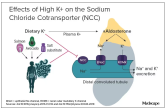News
On Second Thought: Aspirin for Primary Prevention — What We Really Know
- Author:
- Christopher Labos, MD, CM, MSC
Publish date: November 6, 2024
Recommendations vis-à-vis aspirin have evolved at a dizzying pace.
News

Sodium vs Potassium for Lowering Blood Pressure?
- Author:
- Christopher Labos, MD, CM, MSC
Publish date: January 30, 2024
Nephrologist discusses benefits of reducing salt in diet and eating more potassium to reduce BP.
Opinion

Multivitamins and dementia: Untangling the COSMOS study web
- Author:
- Christopher Labos, MD, CM, MSC
Publish date: October 3, 2023
When you get a positive result in your research, it’s always exciting. But when a slew of studies that came before you are negative, you aren’t...
Opinion
Conflicting blood pressure targets: Déjà vu all over again
- Author:
- Christopher Labos, MD, CM, MSC
Publish date: July 13, 2023
Arguing about 140/90 mm Hg or 130/80 mm Hg is less important than acknowledging that we should be aggressive in screening for and treating...
Opinion
Is it time to stop treating high triglycerides?
- Author:
- Christopher Labos, MD, CM, MSC
Publish date: March 30, 2023
There may be noncardiovascular reasons to treat hypertriglyceridemia.
